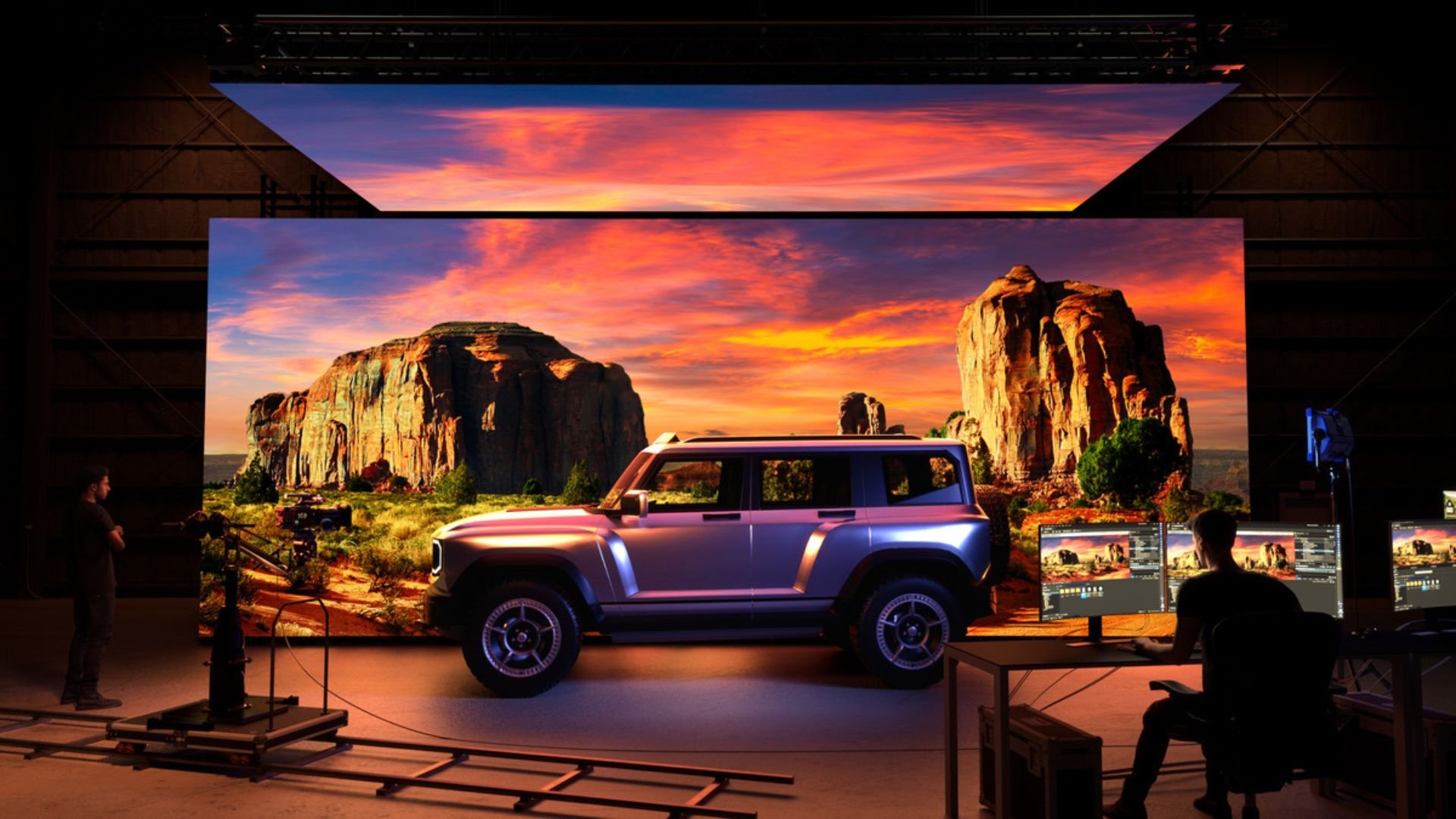Today, someone who missed last year’s NAB asked where all the virtual production video walls are. Given the sheer acreage of LED panels deployed at immediately post-pandemic shows, that’s a pretty reasonable question - there was a period where NAB was the virtual production show, especially if we spent most of our time in Central Hall, around exhibits which are of most interest to film and TV camera people.
There’s still a bit of it around in 2024; it’s retrenched, not vanished. Vū, a virtual production studio which itself has a large facility in Las Vegas, has been hosting offsite events on its volume stage for the last couple of years. Companies that nobody in film and TV had heard of a few years ago are here in force. Megapixel and Brompton make the processors which turn SDI or HDMI signals into data to drive video wall panels, and Planar, manufacturer of the panels themselves, has a large exhibit in South Hall.
Down at the back of Central Hall, meanwhile, is the phone-code-sized area given over to Sony and its coterie of technological marvels. It’s exhibits like this which make us keenly aware just how much Sony really does, from radio mics to broadcast infrastructure to high-end reference monitoring. For a camera specialist, it’s somewhat sobering to realise the sheer range of things the company gets up to which aren’t Burano.
Virtual production on the moon
By far the largest single area of the booth is occupied by the virtual production demo. It includes an area of barren, rocky terrain intended to integrate with a moonlike environment displayed on the video wall behind. We’ve been enthusing about Sony’s video wall tiles ever since the company unveiled what was then referred to as CLEDIS, for Crystal LED display. It was certainly one of the finest video displays ever made at launch, benefitting from reasonably high (though actually not world-beating) resolution and a low-reflection front panel that recalls the black mirror of a phone screen. It’s Sony, so it was expensive, but it was wonderful.

The Verona update is potentially even more wonderful, improving that anti-reflection coating still further. A number of other changes seem intended to improve handleability, with better rigging and support options, and that’s the change which is a clue as to why there are fewer really big video walls at NAB this year. Instead, there’s a somewhat larger number of small ones. The same thing is happening in the wider virtual production industry. The fact that Sony is deliberately making a more portable version of its LED panels might well be down to a recognition of this.
The world has recognised that virtual production is wonderful and the results can be spectacular, but the really enormous examples are tools for the very highest peak of the high end. Unfortunately, the company involved must remain nameless, but at least one absolute monster of a wall in Los Angeles - which was still being constructed just post-pandemic - was dismantled to create smaller, more easily reconfigured setups. That happened because the company perceived - probably correctly - that there’s only a very, very small number of productions that want or need a 100-plus-foot virtual production facility.
Well, there’s probably quite a few that want and need it, but not many can afford it.
Filling a niche
So Sony’s move toward something a bit easier to move around can be seen as reflecting the realisation that no, virtual production is not going to become the default way to shoot everything. Smaller, more affordable, more easily-reorganised facilities seem likely to find the most work. Possibly the best example of this is Carstage in New York, which has become internationally famous because of its laser-targeted offering - it lets people shoot car interiors quickly and easily, and it’s only just about big enough for the car.
So, dreams realities seem to have come into congruence as the world works out how virtual production is best deployed. That’s a good thing. Companies as big as Sony would not be so enthusiastically pouring R&D into a project like Verona if they did not feel much the same way. The same goes for Aputure and its image-based lighting initiative. Virtual production is not going anywhere - it’s just becoming normal, and with that comes the implication that it isn't quite the spectacular event it once was. That seems a fair trade-off, doesn't it?